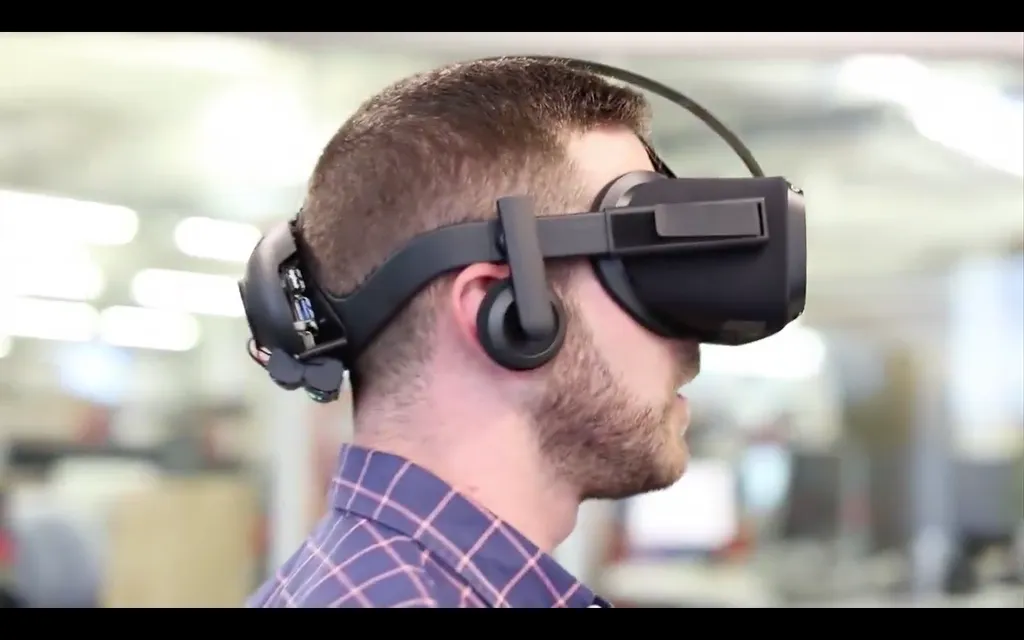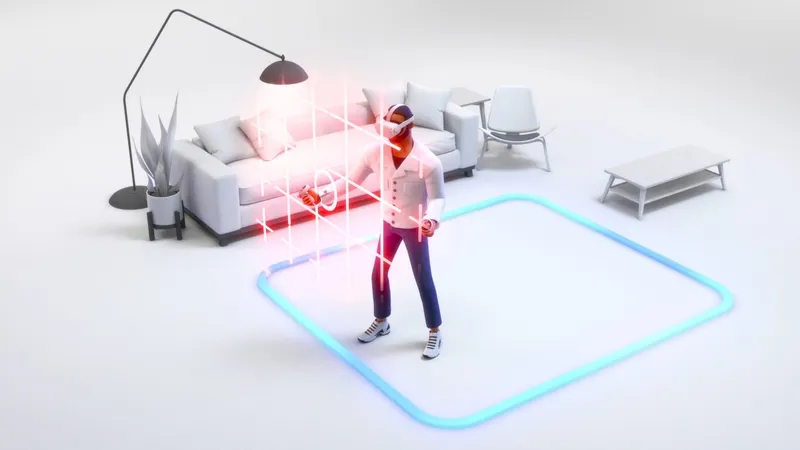We went hands on with the Santa Cruz prototype from Oculus, which is the current name for an early standalone completely mobile VR headset the company is working on that includes position tracking. Santa Cruz requires no external rendering or tracking hardware to provide a full room-scale experience — it is a completely self-contained mobile VR headset.
No photos or videos were allowed for the demo, and it was a brief hands-on. The device looked and felt much like an Oculus Rift. Demo providers declined to say whether the demo ran at 60, 75 or 90 frames per second, nor did they reveal the resolution of the headset. I found Oculus CTO John Carmack after the demo and asked him about it, and he said he actually moved off the position tracking project some time ago. The inside out tracking progress seen in the Santa Cruz headset was primarily made by Oculus computer vision teams, he said.
Inside the headset, I walked from one end of the room to another and back again, jumped and crouched, and the self-contained unit didn’t lose tracking. The headset displayed a sparse environment with no clear interactivity available beyond the ability to move freely around the room. The headset featured four cameras on the front face, two pointed toward the ceiling and two more pointed toward the floor.
When I approached a wall a blue grid line came up warning me of its proximity. Tracking did have one small hiccup when I reached a corner of the room and turned quickly, but otherwise tracking was really solid and I felt no discomfort quickly taking several steps across the room. Overall, the experience felt more like a Rift that went wireless rather than a Gear VR that gained position tracking. I asked Carmack what the frame rate on the headset was and he said he wasn’t sure, but he suspected it was closer to 60 frames per second and the optics is what made it feel more like a Rift.
The headset was in a super early state, with a battery hanging on the back that got disconnected once as they carefully placed it on my head.
Intel and Qualcomm are among a number of tech companies attempting to figure out how to do inside out position tracking in a way that doesn’t drain the battery too quickly. With a big reveal on ‘Santa Cruz’ at Oculus Connect by Facebook CEO Mark Zuckerberg, it is clear a self-contained mobile unit is a high priority of the company.
Updated with information from John Carmack.




























